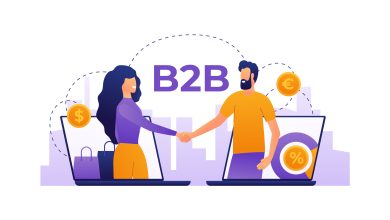The Future of Telecom Billing: Where We’re Headed?

Using telecom billing software to manage your telecommunications has given you the ability to bill customers, analyze revenue, account for expenses, and automate reporting functions in ways that were not possible before.
Yet even as telecom software becomes more and more sophisticated. The future of telecom billing promises even more new options and opportunities to take full advantage of your business’s potential.
In this article, we take a look at some of the most exciting ways telecom billing is evolving and give you an idea of where you can expect your business to go in the coming years.
Should You Focus On The New Billing System?
Ultimately, your telecom provider will always be responsible for sending you a bill. However, several companies offer new billing systems and other solutions. Customers would prefer an outside company to handle their billing. But that there is still work to be done on both sides to make it happen.
If your telecom provider hasn’t already offered to do so, it might be worth asking if they’d consider outsourcing some or all of their billing operations. Billions of dollars are lost in telecom billing fraud every year. The telecom industry loses $22 billion annually due to false charges and overages.
And that figure doesn’t even include customer service calls related to billing issues. Telecom providers should take advantage of software-as-service (SaaS) technology from companies to solve these problems once and for all.
SaaS platforms help telecom providers save money by offering real-time alerts about any potential problem areas in a customer’s account, including changes in spending habits and fraudulent charges.
By using SaaS technology, telecoms can keep costs down while improving their relationship with customers through better communication. Using modern telecom billing systems also has its benefits for customers.
One of the most common reasons people contact their telecom provider is because they want to lower their monthly bills. Telecoms could use data collected from their billing system software to create targeted promotions based on individual usage patterns.
For example, someone who watches a lot of Netflix could get a discount on his broadband package during peak hours when he’s likely streaming video content at home instead of paying for costly mobile data roaming fees abroad.
Or, if a user consistently goes over her limit each month. Her telecom provider could send her a text message warning her she’s approaching her limit before she incurs additional charges. Telecom billing systems have come a long way since please pay now were scrawled on pieces of paper and stuffed into envelopes.
Nowadays, telecom billing has become more efficient than ever before. As telecom providers look for ways to improve their bottom line and give customers more control over how they pay for services.
Trends in Telecom Billing Software
While telecom billing is an industry fraught with complexities, such as disparate invoicing rules between different countries and carriers, there’s still a lot of opportunity for companies that can offer software designed to handle these challenges.
Here are a few trends in telecom billing software to watch out for.
A Cloud-Based Telecom Billing Software Is Inevitable
For years telecom billing has been an on-premises business. That is, telecom providers have had to host their servers to process charges from customers.
This means that whenever you need a new feature, you have to wait for your provider to make it happen. Nowadays cloud-based services mean you can instantly update your system whenever necessary. All this will be at no extra cost (beyond what you already pay).
The result? Faster time to market and less money spent on unnecessary updates.
More Telecom Providers Are Offering Self-Service Tools
Customers want options when it comes to managing their telecom accounts. With self-service tools, they can manage their accounts online without having to call up customer service representatives every time they want something done.
What’s more, self-service tools allow telecom providers to reduce staffing costs while increasing customer satisfaction. As more telecom providers roll out self-service options, expect them to become increasingly popular among both consumers and businesses alike.
Telecom Billing Will Become More User Friendly
As data becomes more important than voice calls (especially for businesses), so too will telecom billing solutions evolve accordingly. One way telecom billing is evolving to meet changing needs is by becoming more user-friendly.
Thanks to intuitive interfaces and other features, telecom bill management should be easier than ever before. Another way telecom billing will become friendlier is through automation. It allows users to spend less time entering data into spreadsheets and performing manual calculations.
These days, many telecom providers offer automated systems that do all of those things for you automatically—no coding required!
Features you need to look out for in software
1 – Account Management Interface: I recommend that you look for software that gives you plenty of options to create and manage your accounts.
It is extremely useful for all kinds of different businesses. Because it can help you keep track of each account without having to worry about manually updating information. On top of that, it can also help your business start collecting revenue right away!
The reason why? It’s a lot easier to just input data once than constantly going back and forth between multiple platforms!
2 – Reporting Tools: Reporting tools are essential if you want a good overview of how your business is doing. You should be able to see everything from sales reports to financial data. Therefore, make sure that whatever software you choose has reporting tools built-in.
It’s also important to know what kind of reporting tools you need before you start looking for software. For example, do you need something basic or advanced? It all depends on what kind of business you have and what kind of information you need access to.
3 – Data Synchronization: One thing we’ve learned over time is that it can be very hard to keep track of different kinds of data in different places at once.
That’s why your accounting software needs to sync with other programs and platforms like email marketing, CRM systems, and more! This way, all your information will always be in one place and up-to-date whenever possible.
4 – Customer Management Tools: If you want to grow your business, you need customers. And if you want to know how well you’re doing with each customer, you need customer management tools.
These tools help you understand who your customers are so that you can tailor their experience accordingly. They also make it easier for your sales team to reach out when they have a new offer or product launch coming up!
5 – Reporting Dashboards: Reporting dashboards are crucial if you want a quick overview of how things are going without having to look through too much data.
The Future of Sales Teams and CRM
.
In many ways, your CRM is a window into what’s going on with your business at any given time. It’s important to stay on top of information and keep tabs on your team so you can make smart business decisions moving forward. If you think about it, tracking is one of the most basic and crucial aspects of sales—and it’s also one of the most often overlooked aspects of growing businesses. Without sales data, you don’t have a real picture of how your company is doing or where it needs to go next.




